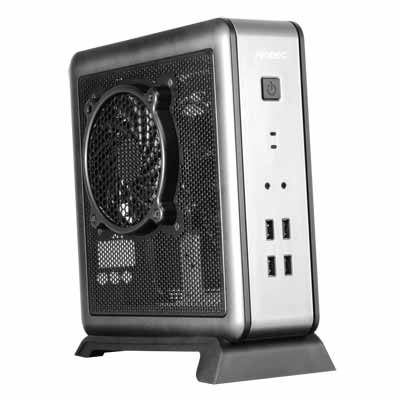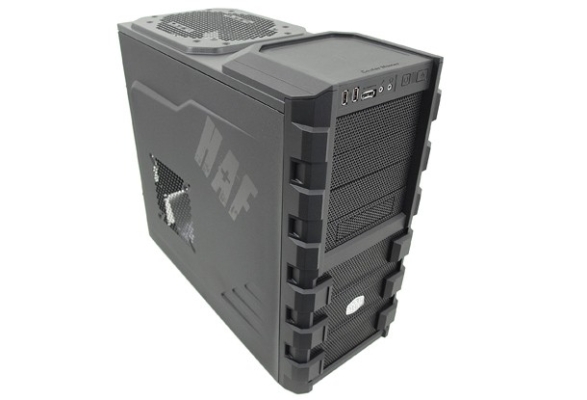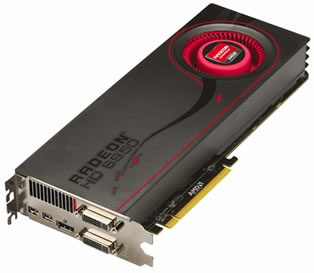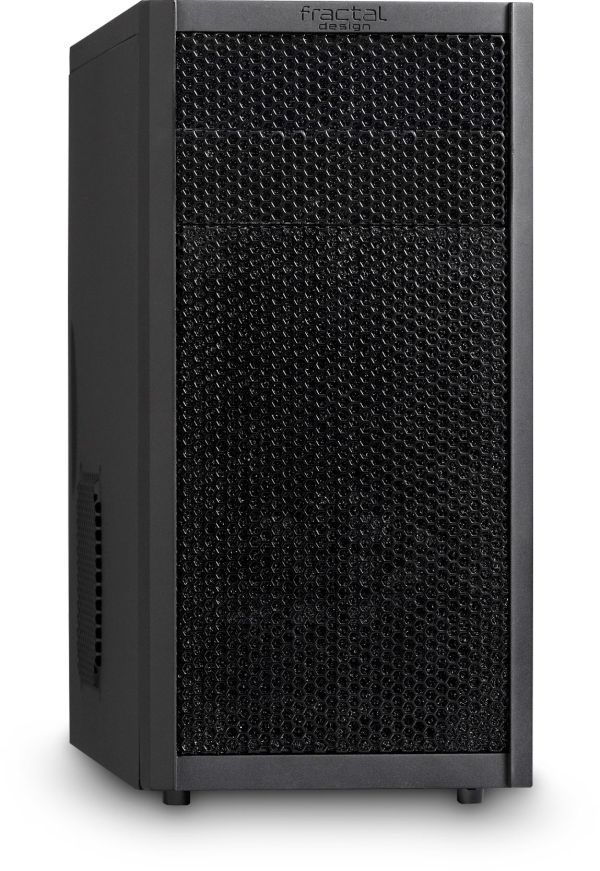Back To School Technology Buyer's Guide
by Zach Throckmorton on August 4, 2011 8:55 PM ESTBuild your own PC
You can usually build a desktop computer for less money than it costs to buy a comparably-specced system from a retailer. The discrepancy generally becomes greater as overall cost and capability go up. Additionally, many college students have access to very low cost Windows 7 licenses. For example, Windows 7 Ultimate costs students here at UW-Madison $64, while at Indiana University it's $20 and at the University of Michigan, $19 (Wolverines can also buy Vista for $9.50—curb your enthusiasm). Be sure to check with your specific college to see if you can get Windows (and other useful software) at a discount before paying retail prices for your OS. Because the cost of the OS varies dramatically from college to college, it is omitted from the following builds.
With that important consideration, let's get to the builds! We present here three configurations: a very tiny but capable mini-ITX system, a relatively small, inexpensive micro-ATX rig, and a more powerful mid-tower. We also suggest upgrades for each computer tailored to different uses.
Intel Mini-ITX System
| Intel Core i3 Sandy Bridge mini-ITX PC | |||||
| Component | Product Name | Cost | |||
| Case + PSU | Antec ISK 100 80W PSU | $85 | |||
| CPU | Intel Core i3-2100T | $135 | |||
| Motherboard | ASUS P8H61-I (Rev. 3.0) | $85 | |||
| Memory | Patriot 4GB (2x2GB) DDR3 SDRAM | $33 | |||
| Hard drive | Samsung Spinpoint MP4 HM320HJ 320GB | $48 | |||
| Total: | $386 | ||||

This mini-ITX system built in an Antec ISK 100 is more than powerful enough to handle web browsing, HD video playback, photo and video editing, many kinds of scientific analysis, and of course, office productivity. It's also sufficiently powerful that you should expect to be able to use it to perform these tasks for your entire four year undergraduate career. Best of all, its tiny case measures less than 9" tall by 9" deep by 4" wide. That's about the size of a hardcover novel (and smaller than an intro biology text!)—saving valuable real estate in a cramped dorm room, for example. Once assembled, it will weigh less than four pounds. It's important to note that the ultra low-profile heatsink that comes with the Core i3-2100T fits inside the ISK 100, but the stock heatsink that comes with the Core i3-2100 does not. Gelid makes a low-profile heatsink that would let you use a Core i3-2100 in the ISK 100 but it is difficult to find. Perhaps its only drawbacks given its size are that it lacks an optical drive and it is not a gaming computer, nor can it be upgraded to become a gaming computer. That said, there is room for two 2.5" hard drives, so you could certainly upgrade it for faster responsivity by adding an SSD or for more storage by adding a more spacious, slower 2.5" mechanical drive.
AMD Micro-ATX System
| AMD Athlon II X3 Micro-ATX PC | ||
| Component | Product Name | Cost |
| Case | Fractal Design Core 1000 | $50 |
| PSU | XIGMATEK ACXTNRP-PC402 400W | $35 |
| CPU | AMD Athlon II X3 445 | $75 |
| Motherboard | Biostar A880G+ | $55 |
| Memory | Patriot 4GB (2x2GB) DDR3 SDRAM | $33 |
| Hard drive | Western Digital WD5000AAKX 500GB | $40 |
| Optical drive | LITE-ON iHAS124-04 | $20 |
| Total: | $298 | |
While the AMD Athlon II X3 445 is slightly less powerful than the Intel Core i3-2100T in the mini-ITX system, it is nevertheless a potent processor up to most tasks, and certainly more than sufficient to provide four years of basic computing. This AMD CPU offers tremendous value—a lot of bang for the buck. Importantly, should you deem more power necessary in a few years, the six core Thuban CPUs will be simple, drop-in upgrades and by then, likely will cost less than $100. That said, the tri-core chip will remain a capable office system processor for four years. For an idea of how it performs, check AnandTech's Bench.
The Fractal Design Core 1000 is one of my favorite newer cases to hit the market. Its low price tag, quality construction, smaller size, and aesthetics are major selling points. At less than 17" deep by 7" wide by 14" tall, it's more compact than many micro-ATX cases, yet large enough to hold many hard drives, a bigger aftermarket CPU heatsink, and/or a larger GPU if you want to upgrade it. I find its thermals are slightly improved by moving the front intake fan to the rear of the case to act as an exhaust.
Biostar's A880G+ is a great value; it's a well-featured budget board that even has an HDMI port, and its integrated Radeon HD 4250 graphics are more than adequate for running Windows' Aero feature and Flash games. Perhaps its only drawback at this price point is its lack of USB 3.0 ports, which will become increasingly useful, though again at this low price, they aren't expected (and a USB 3.0 expansion bracket could be added later if the need arises). Finally, the Xigmatek PC402 400W PSU is relatively well-built for its price tag, and has a quiet 140mm fan.
This system could easily be turned into a respectable gaming rig by adding a discrete video card. Given the thermal limitations of the case at stock, I suggest adding a 120mm fan for better airflow. And given the limitations of the 400W PSU, I wouldn't add a GPU that's more power-hungry than a Radeon HD 6870, and even that would require a molex-PCIe adapter. The Radeon HD 6770 (the rebadged Radeon HD 5770) remains a very strong value for $100 or less after rebate, providing gamers acceptable frame rates or better at resolutions lower than 1080p with medium settings in all but the most demanding games.
Intel Mid-Tower System
| Intel Core i5 Sandy Bridge ATX PC | |||
| Component | Product Name | Cost | Rebate |
| Case | Cooler Master HAF 912 | $75 | -$10 |
| PSU | Antec Earthwatts 430W | $44 | |
| CPU | Intel Core i5-2500K | $220 | |
| CPU heatsink | Cooler Master Hyper 212+ | $30 | |
| Motherboard | Biostar TZ68A+ | $100 | |
| Memory | Patriot 8GB Gamer 2 Series (2x4GB) DDR3 SDRAM | $55 | -$20 |
| Primary storage | OCZ Vertex 2 solid state drive | $100 | |
| Secondary storage | Western Digital 1TB 5400RPM WD10EARS hard drive | $55 | |
| Video card | XFX HD-679X-ZDFC Radeon HD 6790 | $135 | -$15 |
| Optical drive | Samsung SH-222AB | $19 | |
| Total: | $833 | $788 | |

If you have more space than a typical dorm room (or think having a powerful computer is worth being even more cramped than usual in a dorm room), this midtower has all the bases covered. The Cooler Master HAF 912 features excellent thermals (HAF stands for high air flow), integrated mounts for 2.5" SSDs, solid cable management, and it's capacious enough for larger video cards and aftermarket CPU heatsinks. At 20" deep by just over 9" wide by 19" tall and weighing in at 18 pounds, it's probably not going to disappear if you inadvertently leave your room unlocked.
The Intel Core i5-2500K is an extremely potent CPU that will remain a very solid processor for four more years (think of how 2007's Q6600 is still a capable chip). Its performance metrics are available in Bench. The Cooler Master Hyper 212+ is a great value, and should allow you to overclock the CPU to 4GHz with minimal effort, though better chips can hit 4.5GHz and some even approach 5GHz. I've had excellent results from the Biostar motherboard in terms of overclocking, and its low price for a Z68-chipset board with all the bells and whistles makes it a compelling option. Of course, a system like this should have an SSD for overall responsiveness, and the OCZ Vertex 2 is a venerable stalwart at an increasingly low price. The 1TB low RPM hard drive offers plenty of storage, though you could certainly swap it out for a larger, faster (i.e. 7200RPM) hard drive if you'll be installing a lot of games that won't fit on the SSD and will benefit from not being put on a 'green' drive.

Finally, we've opted to recommend a Radeon HD 6790 because of its value, though a GeForce GTX 460 1GB might be worth spending a few dollars more for a bit better performance. If you want to spring for GPUs that will play the latest titles for a year or two longer than these, consider the AMD Radeon HD 6950 and NVIDIA GeForce GTX 560 Ti. These cards trade blows both in terms of performance and are priced at $200 or slightly higher.
While these do it yourself builds cover a range of typical college uses and needs, we recognize that many readers prefer retail, pre-built systems. Therefore a few models are discussed on the next page.











94 Comments
View All Comments
Freakie - Saturday, August 27, 2011 - link
Kind of surprised to see you guys leave out higher end ASUS computers and Clevo barebones. ASUS has the best warranties out there, hands down, and their prices for the whole package are amazing when you factor that in.And then you have bang vs buck. You get much more when you go with a Sager and buy Windows with your student discount (Win 7 Pro direct from Microsoft, not the school, for $30). And the repair-ability of Clevo barebones makes any problems after your warranty a LOT cheaper and they are built to be user-serviceable. ASUS laptops also have a noticeably higher amount of user-serviceability than most other OEMs. Buying from a OEM in general when it comes to laptops is just a bad idea, from Apple to Voodoo, your overall experience is gonna suck a majority of the time when compared to ODMs.
harth234 - Friday, August 9, 2013 - link
Could we get another one of these for 2013?ternerdaniel - Monday, August 30, 2021 - link
Regardless of the specialty in which the student studies, a small high-performance laptop with parameters that meet the tasks with which he works will be very useful. With such a gadget, you can quickly make informative notes right during a lecture, work on various projects and presentations, use the literature you need during your studies without wasting time visiting libraries, prepare any test papers, essays, and abstracts in printed form. Also for studies, you will need an interesting educational resource https://bestessayservicesradar.com/best-essay-writ... which contains useful materials for studies. And in some fields of study, such as IT, law, and economics, computers are simply essential in the learning process.kath1mack - Wednesday, April 13, 2022 - link
Oh, yeah! We are very lucky now that have all these technologies. My teachers always require a bibliography section which takes a lot of time to make.